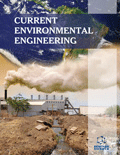Abstract
The methane oxidation capacities of soil, compost, and various soilcompost mixtures at different moisture contents and temperatures were determined through a series of batch incubation experiments. The maximum methane oxidation capacities of compost and soil-compost mixtures were almost an order magnitude greater than mineral soil, as a result of increasing organic content of the media. Media with higher organic content also required much higher optimum moisture contents to achieve their maximum methane oxidation rate, with optimum moisture content for maximum methane oxidation capacity ranging between 35 and 50% of water holding capacity. The effect of temperature changes between 10°C and 30°C was found to be greater at higher organic contents. Moisture content and temperature were found to be equally important parameters for methane oxidation rate, but these effects only significantly influence oxidation rates within a range that is close to their optimum. Outside this range, methane oxidation rates fall well below their maximum and changes to moisture and temperature do not considerably affect the methane oxidation rate. The relationship between organic content and moisture content at a given temperature was developed. This curve, when combined with temperature effect can estimate methane oxidation rate at a given organic content, moisture content and temperature.
Keywords: Global warming, greenhouse gas, landfill gas, methane oxidation, methanotrophic bacteria, organic contents.
Graphical Abstract
 10
10

